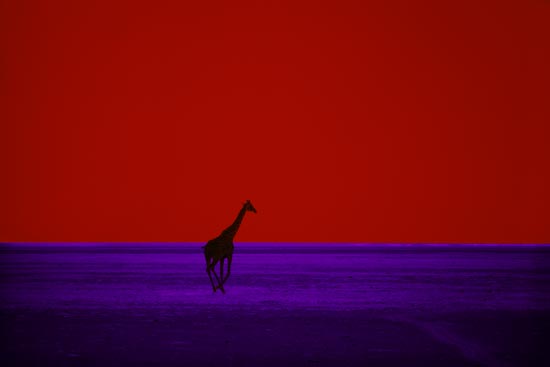Pete Turner sees jazz in living color
Noted photographer’s latest book collects his famed album covers
This vivid image, shot in Africa, graced the cover of Antonio Carlos Jobim's Wave album.
Pete Turner ’56 (photography) was drafted into the Army shortly after graduation. It was a lucky break.
For starters, “I didn’t have to fight any wars,” he says. He served with the second signal combat photography team at the Army Pictorial Center in Long Island City, N.Y., where his job involved operating a color lab and testing the latest materials. Free to shoot whatever he wished, Turner developed an extensive color portfolio at a time when color photography was still rare.
The lab’s proximity to New York City was another plus, providing access to advertising agencies and prominent magazines as well as unlimited subject matter and great entertainment. The young photographer kept his eyes open for opportunities.
“ I loved to go to record stores and look through the bins,” he says. “I kept seeing this name, Creed Taylor. So I called him.”
The record producer was working on an album called The Sound of New York. “He especially liked my photos of the city covered in snow, which was such a contrast to the sounds on the recording. He used one, and that became the beginning of a wonderful friendship.”
Turner went on to achieve recognition for his stunning color photos, which have appeared in noted magazines including Esquire and Look. Taylor produced some of the most highly regarded jazz recordings of the era for Impulse!, Verve and his own CTI label. The two worked together for more than 20 years, with Turner providing the memorable cover images for albums by John Coltrane, Bill Evans, George Benson, Quincy Jones, Stan Getz and others.
More than 80 of those covers have been collected in a new book, The Color of Jazz (Rizzoli, 2006). The work shows the covers in the actual size of the LP album format.
Turner’s covers helped set the trend of creating album art independent of the musical contents. In some cases, Turner shot portraits of the artists for use on the covers, but more often, Taylor selected images from Turner’s portfolio. One famous example is the vivid image of a galloping giraffe used on Antonio Carlos Jobim’s Wave album. Taylor wanted to avoid the obvious; Turner provided the perfect alternative, and DJs around the country started referring to the record as “the giraffe album.”
Turner says the long-time relationship provided the ultimate showcase for his work, in terms of both public recognition and visual impact. Records reached a mass audience and LPs, unlike today’s CDs, are large enough to display art to great advantage. “We call that real estate,” he says, “and we had a lot of real estate.” Plus, record albums have great longevity.
“ People throw magazines away, but nobody throws records away.”
To view some of the photos from the book, as well as many of Turner’s most famous images, visit Pete Turners website.









